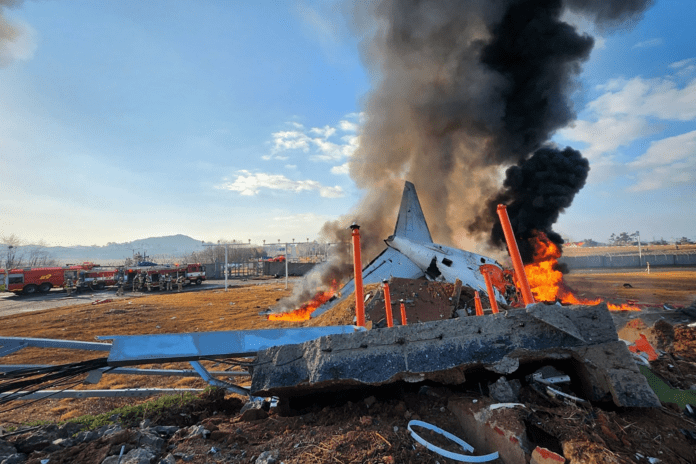
Investigators have uncovered evidence of a bird strike in the Jeju Air crash that claimed 179 lives in South Korea last December.
According to a preliminary investigation report released Monday, feathers and blood stains from both engines of the Boeing 737-800 belonged to the Baikal teal, a migratory duck known to fly in large flocks.
The investigation, which is probing South Korea’s deadliest aviation disaster, will focus on the role of the bird strike and the concrete structure at the end of the runway that the aircraft collided with.
The engines will be disassembled for a thorough examination, and the concrete structure, which housed a navigation system, will also undergo detailed analysis, the report stated.
The aircraft had departed from Bangkok on December 29, heading to Muan International Airport in South Korea’s southwest. At 8:57 a.m. local time, three minutes after making contact with the airport, the control tower alerted the crew about bird activity in the area.
Two minutes later, the pilot reported a bird strike and declared a mayday signal, requesting to land in the opposite direction. The plane, however, belly-landed without deploying its landing gear, overran the runway, and exploded upon impact with the concrete structure.
Flight data and cockpit voice recorders ceased functioning approximately four minutes before the crash, authorities noted.
Experts familiar with the Boeing 737-800 have raised concerns about the concrete barriers near the runway, with some arguing that their absence might have reduced the casualty toll.
The concrete structure, which holds a localizer used to assist aircraft landings, is reportedly installed at other airports in South Korea and internationally.
Following the crash, South Korea’s transport ministry announced plans to replace similar concrete barriers at seven airports nationwide. Additionally, runway safety areas will be modified to improve safety.
The preliminary report has been shared with the United Nations aviation agency and authorities in the United States, France, and Thailand.
From BBC






